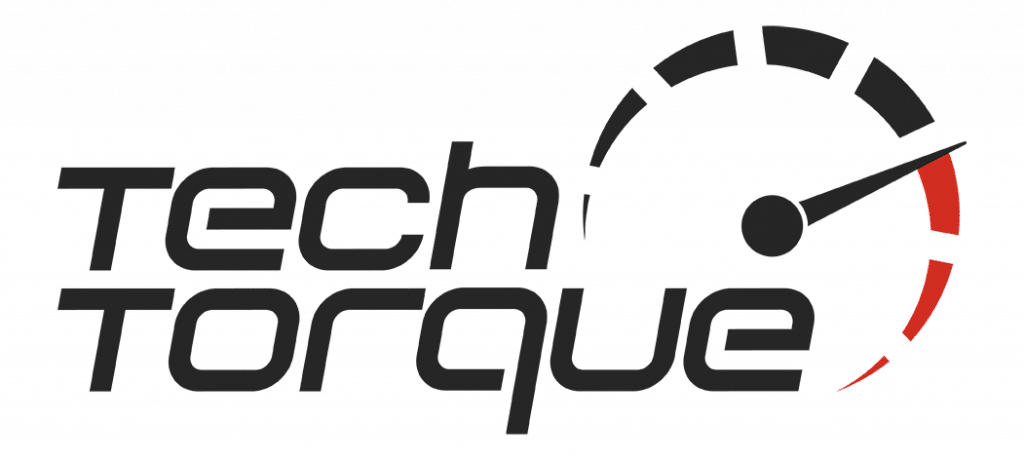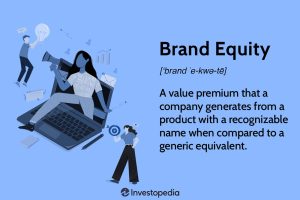So, if your response rates are below average, you do need to stress because the average isn’t impressive. I look at 7 easy hacks using the 80/20 Rule to buck the trend.
80/20 Rule Industry Averages
Let’s look at averages if you’re selling Computers (hardware, software or services) or Electronics.
According to MailChimp who sends billions of emails a month, the average Open Rate for this group is only 19% and CTR (Click Through Rate) is a measly 2%. If that’s the best you can do, you’ll need a huge email database to get enough decent tech sales leads.
But you need some perspective too: don’t stress if most of your web opt-ins or email recipients don’t respond. They won’t and they can’t. It’s a mathematical fact that goes back to the Pareto Principle of 1896, better known as the 80/20 rule.
– Where 20% of your customers drive 80% of your profits
– And only 20% of your products will drive 80% of your revenue
– While just 20% of your time will generate 80% of your results.
The Pareto Principle is one of the laws of the universe; a bit like gravity. You could ignore it or stress about it, but you can’t change it. We suggest you go with it – and accept that you’ll never convert the majority.
So what about reality?
Will Swayne from Marketing Results in his post The 80/20 Rule on steroids, said that Pareto’s Principle doesn’t just apply to top level ideas. It applies to them all. As he puts it, the 80/20 rule is a ‘fractal’ or never-ending pattern so, in theory, you can apply Pareto’s Principle almost as an infinite drill-down through one relationship:
– Where 20% of opt-ins will drive 80% of enquiries
– 20% of enquiries will drive 80% of sales
– 20% of sales will deliver 80% of profits.
In other words, in his model, with these figures, 1% of your website opt-ins will deliver 80% of your profits.
That may be the case in his business, but from our Aussie b2b Tech Marketing experience, the raw Pareto maths are best applied once. That is, each of the 3 models above may be true, but conflating them might be a bit of a stretch. We find that, for most clients, the rule is somewhere between 90/10 and 70/30. Wherever it is exactly, the proportion that drives desired results – enquiries, sales or profit – is always the minority.
Therefore, in the Aussie Tech Sector, where there are many steps between opt-in and signed deal, you need to optimise every step so you can increase the value of the minority.
But if you don’t know who forms the 10-30% until after the fact, how do you increase their value?
Here are 7 steps we use to help Pareto deliver gold nuggets in b2b tech marketing.
1. Reduce your opt-ins
That may sound crazy, but what if you’re an Aussie Security Software reseller?
Let’s call you SmartSec, and you only serve local customers. Getting opt-ins from Peru or Azerbaijan might make the numbers look good, but won’t help you build your business here.
What you want is a higher proportion of opt-ins to be relevant, local and with problems you can solve.
If you build a database on these parameters, in little time you’ll have fewer contacts generating higher quality tech sales leads and more revenue. Your opt-ins may go down, but your bank balance will go up. So the first rule is: don’t try to please everyone. You can’t – and you could spend a fortune trying.

2. Tailor your offer
To reduce irrelevant opt-ins, make your opt-in offering (your bait or resource to download) really specific to the type of prospect you want.
So as SmartSec, let’s say your prospects are Australian organisations with 500-1000 seats, mostly in finance, communications and professional services. You’ve researched and written a guide to the top 10 security threats, so you might call it The Top 10 IT Security Threats in 2018.
Then again, you might not.
For higher resonance with your targets, you’d look at each of the top 10 security threats and select those that relate to your three target industries. Then, you’d frame each of the threats to each vertical, and create a separate tailored resource for each. Considering that the big investment is in your original research and generic draft, tailoring that draft by industry takes no time at all – and the benefits are huge.
It’s simply a matter of using industry-specific terminology and examples; 10 minutes’ work for each of them, once the original generic draft is done. So, you’d end up with Top 10 IT Security Threats for the Australian Finance Industry in 2018 plus corresponding versions for the other two.
This is our approach for all our clients.
3. Target your landing page
This is the page visitors reach to register (or opt in) to receive your Top 10 Threats guide. This page needs to speak to them by vertical, too.
If, as SmartSec, you have only 3 verticals and you’re reaching out to audiences on LinkedIn, you might decide to segment your messages, posts or content by industry. Then it’s vital to have a landing page to match each vertical, speaking in its own language, highlighting the top 3 threats to it.
You might also have a CTA (Call to Action) to register for Top 10 Threats on other web pages. If this is non-industry-specific, your landing page could be too, so long as the opt-in allows visitors to choose their vertical version with one click.
4. Customise your emails
Of course you should target your covering emails by industry too, both the delivery email with Top 10 Threats and outgoing emails to your existing database. This may sound difficult too but isn’t: one template produces 3 emails, targeted per vertical. You just copy and tweak.
For one of our clients we did run a generic ‘one size fits all’ email and resource campaign at first, because the CMO was sceptical about the cost-benefit of segmenting. When the initial results were underwhelming, we segmented the database and ran multiple parallel campaigns with segmented resources and emails, and increased the download rate by 7 fold in 2 weeks. The turnaround was next to instant.
By the way, if you think direct web download is better than email delivery, think again. What happens if your visitor clicks ‘Get Top 10 Threats’ and then her phone rings and it’s a crisis that derails her afternoon?
Unless she saved your precious Top 10 Threats immediately, it’s unlikely she’ll go back. Yet, if she has your email with a link to it, there’s a chance that she’ll come back when things have cooled down. You could also set your system with reminder emails (2 with different titles) in case she receives the email, but doesn’t click through to the resource.

5. Adapt your web content around the 80/20 Rule
You’ll know from Google Analytics whether the main entry points for visitors are your home page or particular landing pages.
If they’re landing pages, make sure they’re targeted by industry, or click to an opt-in page where visitors can select their industries (see the 2 above). This is best done by capturing the minimum (in b2b tech marketing) it’s usually first and last name, email and maybe company) and providing a simple 3-part dropdown to enable industry selection with one click.
Another way is to capture the minimum data at opt-in, and gather other info sequentially with other emails. It’s up to you, but don’t interrogate your visitor on her first request; she’ll just click off and find what she wants elsewhere.
If your homepage is the magnet, make sure visitors can find themselves by industry, and then go to the resource created just for them (see 2 above) or go to a page written just for them (see 3 above).
6. Allow visitors to self-select
Pages that allow visitors to ‘find themselves’ are the most powerful pages on your website.
Each one speaks to a specific vertical about the exact problems in that industry, engaging directly with the buyer personas in each. It’s like saying ‘ I know you and how you feel’ and this works wonders if done well.
Apart from addressing your visitor by industry and buyer persona, you want to explore the industry-specific problems she faces, the alternative choices and their pitfalls and why your solution is ideal for her industry.
But don’t leave it there.
Make it really clear who your ideal buyer is.
As SmartSec, it would be Australian companies of 100-1000 seats, located in Australian capital cities, in verticals of Finance, Communications and Professional Services, who have the problems you’ve identified above.
And go one step further: make it clear who is not a good fit for you.
For instance, as SmartSec, you don’t want to attract startups with no money, or enterprises like Telstra who will tie you in knots for years with proposals, PoCs and legal paperwork. Be bold enough to be clear. Your audience will thank you, and so will your sales team. They’ll be closing deals with suitable customers, not chasing phantom opportunities. The CFO will be pretty chuffed, too.
7. Modify your blog
If you think you’re too busy to blog, think again.
Your blog is the fastest way to react to change or alert your audience to new ideas, products or opinions.
It’s far cheaper and quicker than anything other than a tweet – and has more depth, credibility and longevity. It’s also up with White Papers for influence.
Once you’ve decided on your ideal customers and how to position your company and offering, every blog post must speak to them specifically. It’s a way of filtering your ideas so they’ll resonate and engage your audience. Then, all you have to do is distribute them to where you know your audience will read them.
As SmartSec, you’d modify your blog to focus on the security space in Australia so, for instance, an alarming statistic on cyber security risk from the head of ASIO might be a good seed for your next post.
Final word on the 80/20 Rule
B2B Tech Marketing comes down to precision.
If your offer, web content, resources and emails are general (imprecise), you’ll resonate with fewer contacts and have to attract a whole lot more to find the right Best Fit Buyers to become customers. That means you’ll need a very big database to eventually gain the same value of business.
Conversely, if you target every step (precise), every visitor, opt-in, download or email response has a higher chance of being a good fit – so you’ll need fewer of them to make the same amount of profit.
That also means fewer campaigns, fewer sales people, fewer sales engineers and overall fewer dollars spent to make more profit. That’s the power of Pareto.
Contact us if you’d like to know more about how Precision b2b tech marketing works.
Original text written by Tracey James and Updated by Matthew Whyatt






